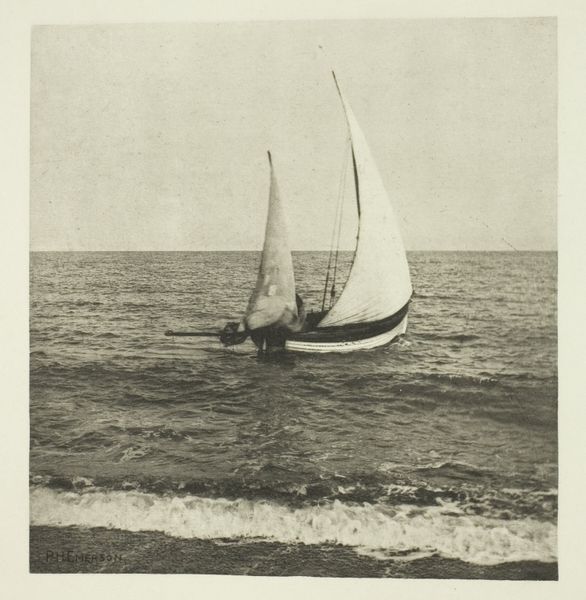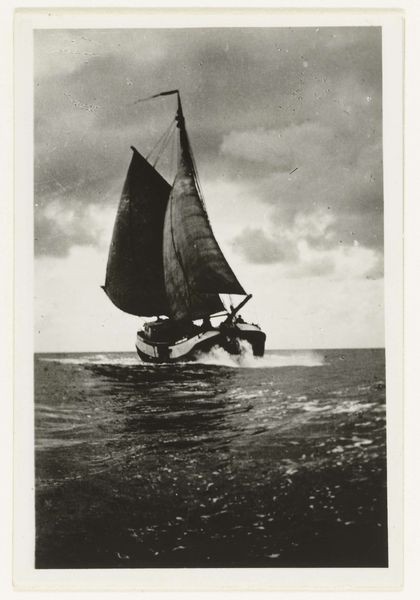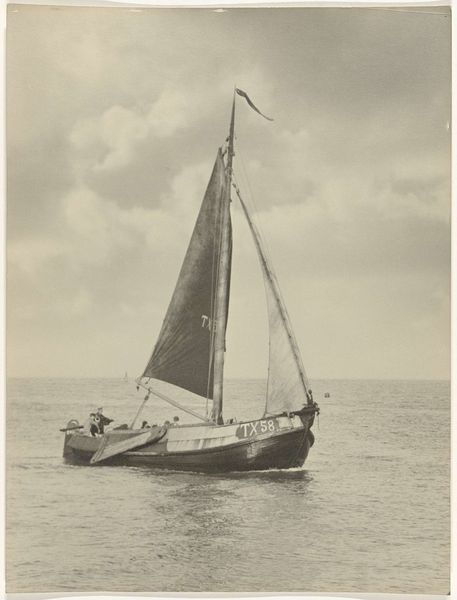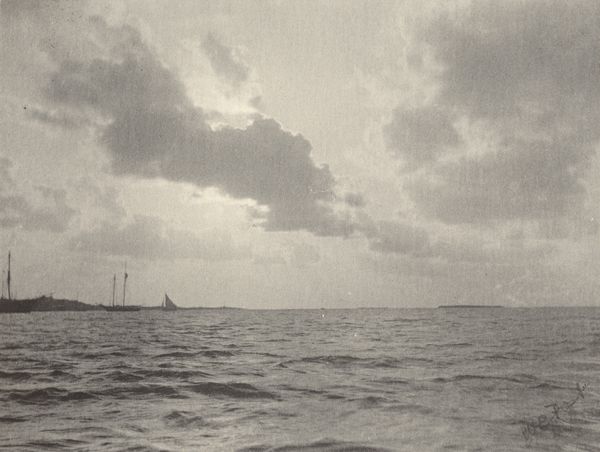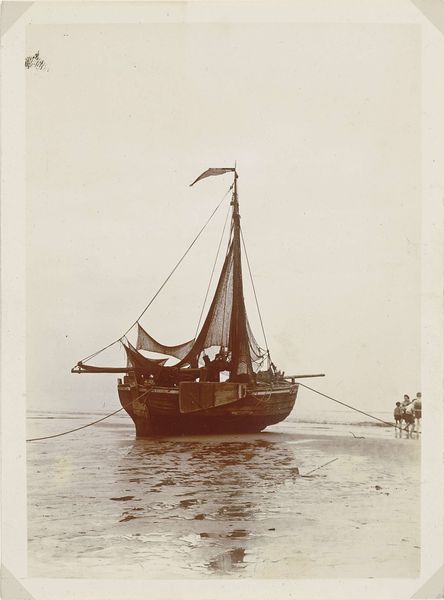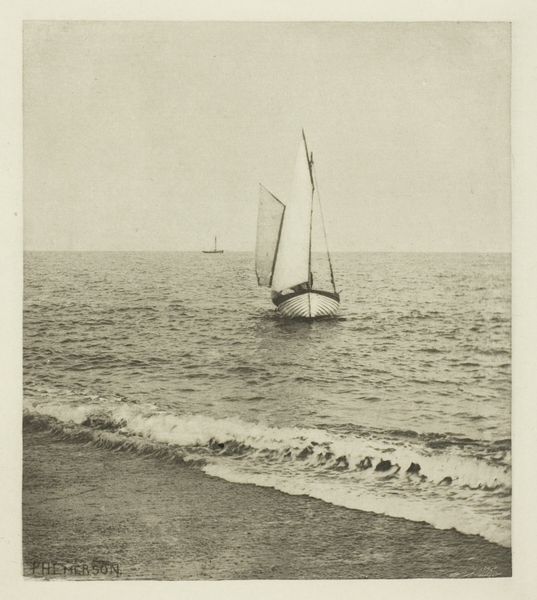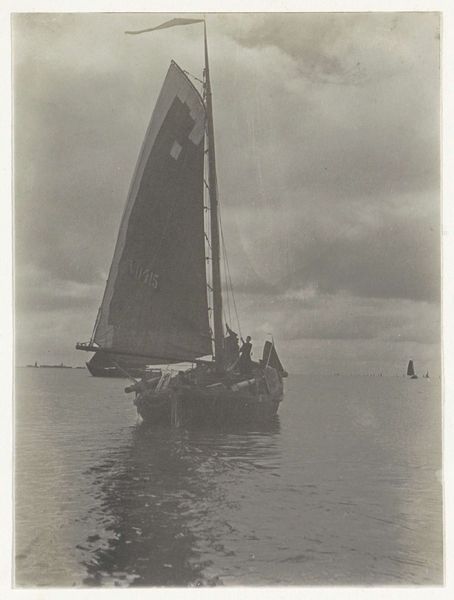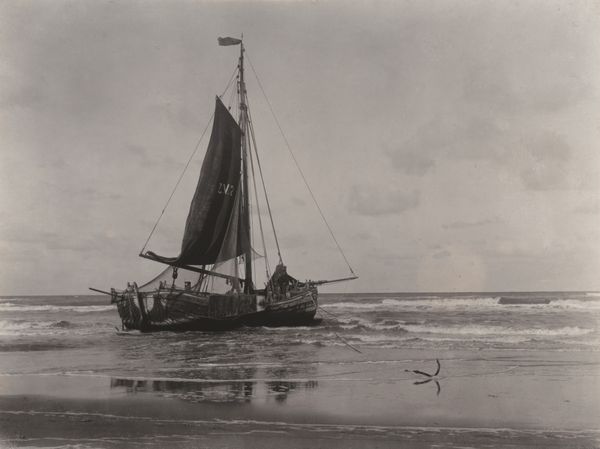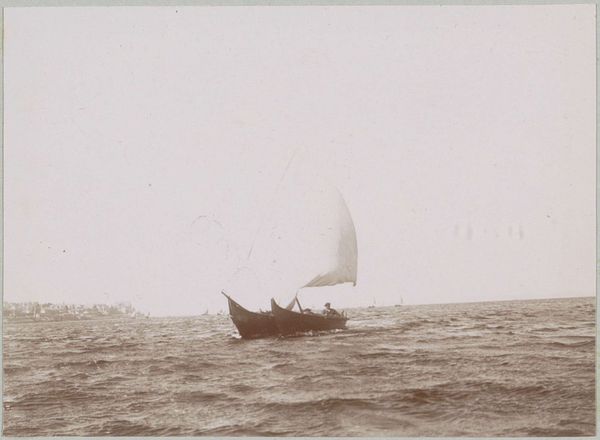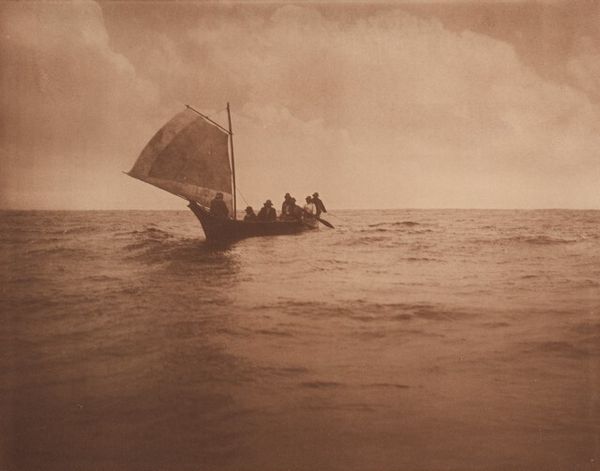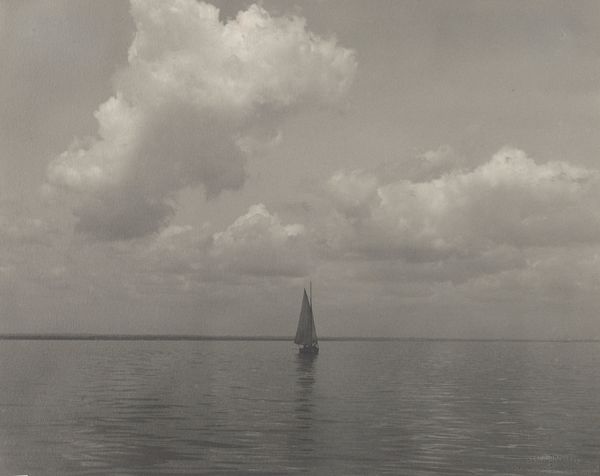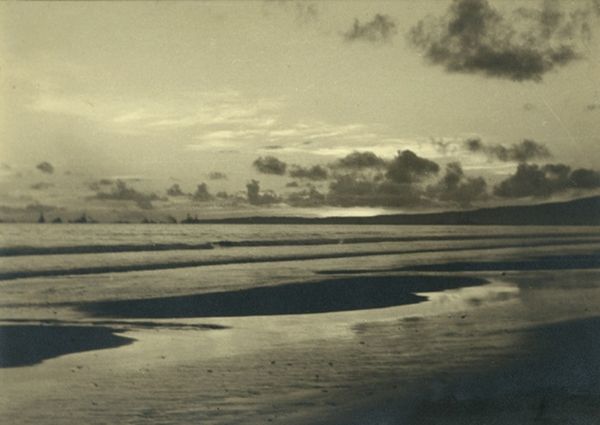
Dimensions: image: 16.1 x 13.3 cm (6 5/16 x 5 1/4 in.) sheet: 57.7 x 44.5 cm (22 11/16 x 17 1/2 in.)
Copyright: National Gallery of Art: CC0 1.0
Editor: This gelatin silver print, "The Incoming Boat" by Alfred Stieglitz, made around 1894 to 1897, is quite striking in its monochrome palette. The rough sea and the labouring boat project such an atmospheric mood, and the way it foregrounds both the water and reflection… What do you make of it? Curator: As a materialist, my attention is drawn to the labour embedded in its production, both that of the fishermen and Stieglitz himself. What kind of labour, physically and socially, was involved in making such a print at the time? Consider the processes of acquiring materials, darkroom practice, and distribution networks to art exhibitions… What was the status of photography as a material practice then, relative to other arts and trades? Editor: So you’re saying it’s more than just an image, but an index of all that work? Curator: Precisely. The print becomes a tangible record of the photographer's intervention. His use of gelatin silver— a relatively new process back then – represents a choice with socioeconomic implications. Mass production of photographic materials allowed greater access but simultaneously industrialized the art form. How might this have affected photography's claim to artistic status? Editor: I see your point. The ‘hand of the artist’ argument is less clear-cut here than it might be in, say, painting. Curator: Exactly. The very ‘truthfulness’ once associated with photography should also be reconsidered: Stieglitz uses his materials and compositional skills, honed by practice and training, to suggest particular meanings and manipulate a supposed objectivity. Editor: I never thought about the materiality of photography this way. Thank you, this definitely gives me a new angle to appreciate Stieglitz's effort. Curator: Indeed. By analyzing the production process, the class connotations in consumption of photography as an artwork, and its means of distribution, we enrich the narrative beyond simply seeing a pretty picture.
Comments
No comments
Be the first to comment and join the conversation on the ultimate creative platform.
